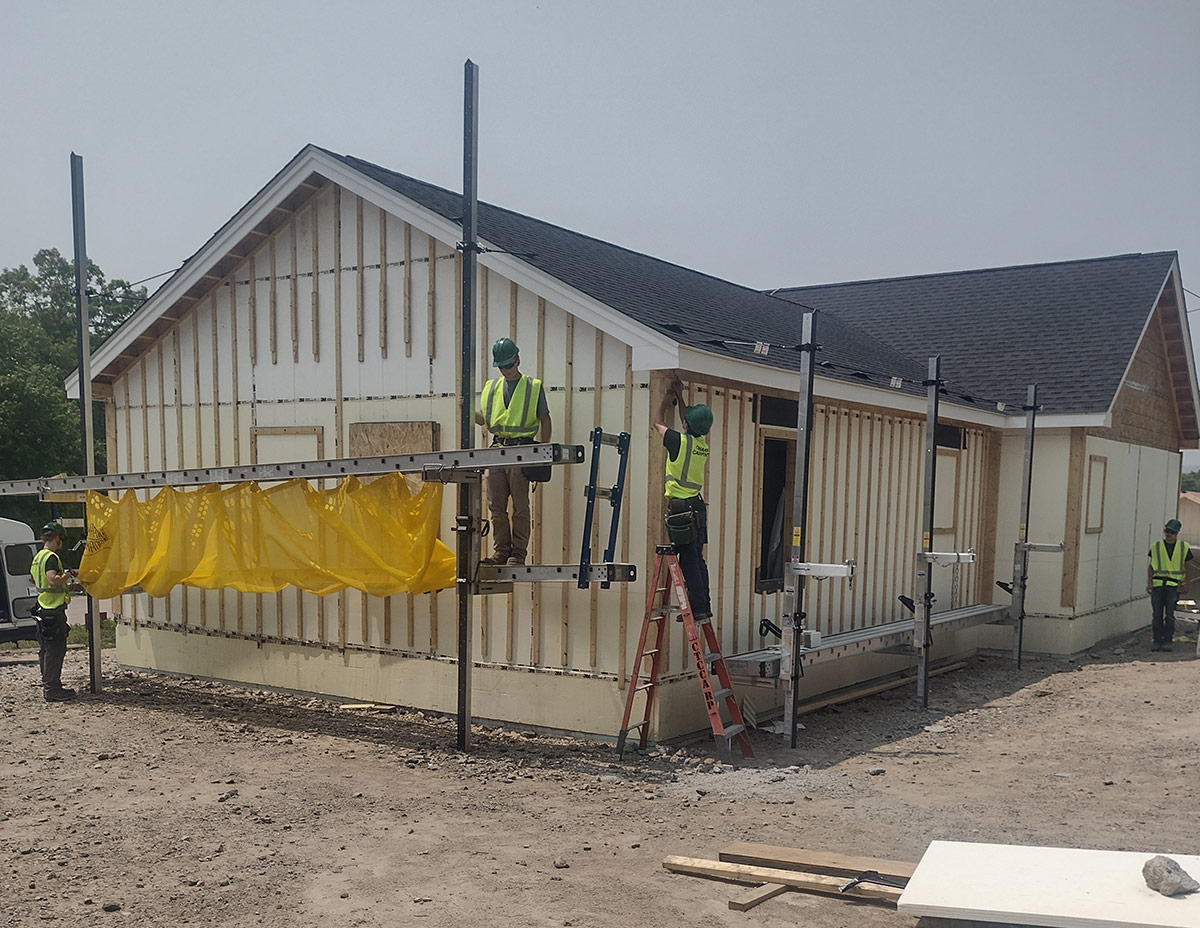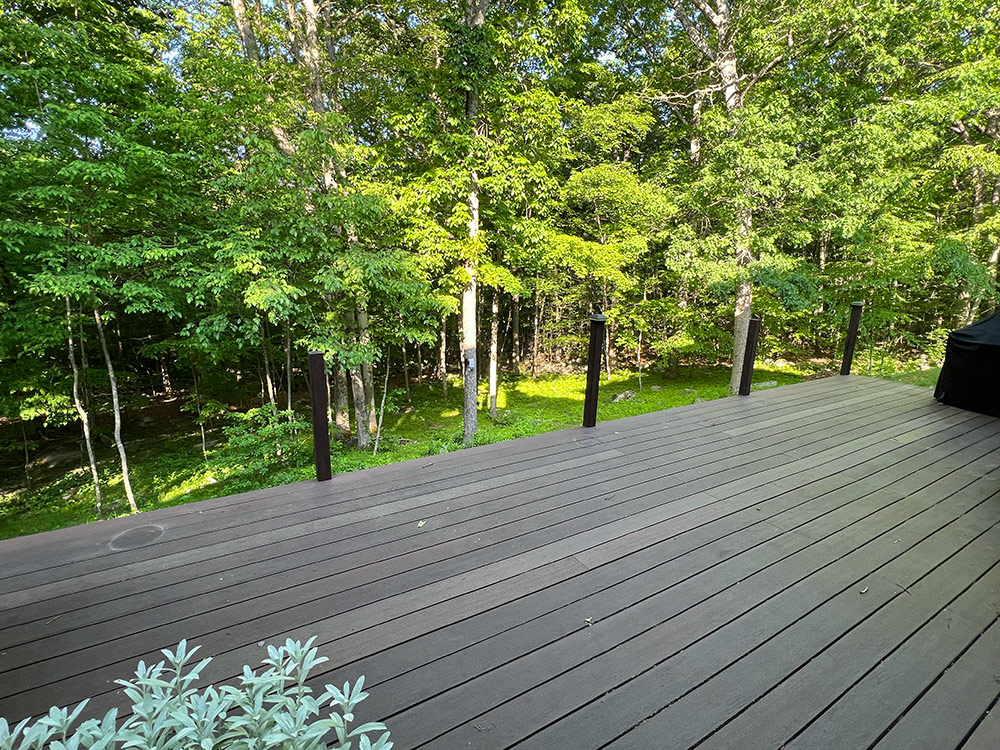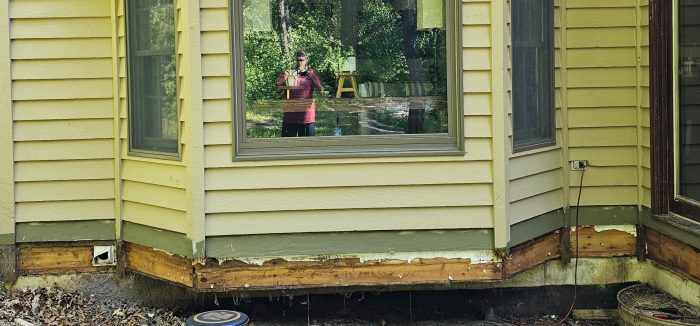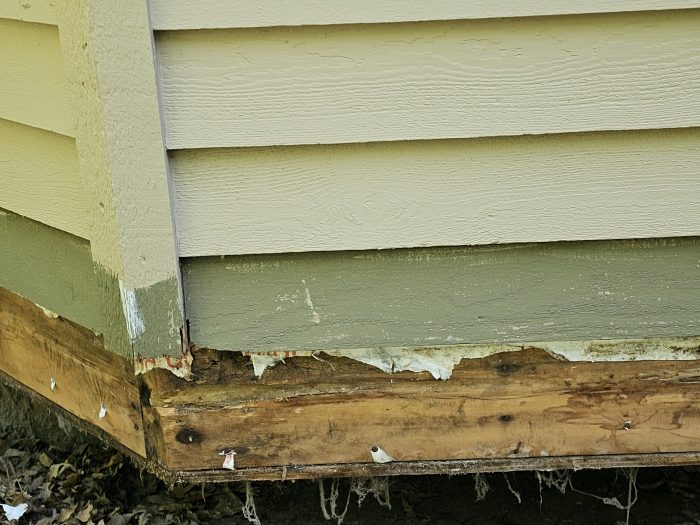Podcast 573: Vibrating Washers, Rot Behind Deck Ledgers, and Tightening Vented Crawlspaces
Soul-bashing work, spray-foam problems, floors for front-loading washers, attaching decks to cantilevered joists, and vented crawlspaces.
Follow the Fine Homebuilding Podcast on your favorite app. Subscribe now and don’t miss an episode:
 |
Help us make better episodes and enter for a chance to win an FHB Podcast T-shirt:
www.finehomebuilding.com/podcastsurvey
Paul is building his own house in Denmark. Dave shares an article on spray-foam problems in Vermont. Orange Cat is hoping to sturdy a floor for a new front-loading washing machine. The Engine Guy is rebuilding his deck.
Editor Updates:
- Mike’s Habitat House
- Mark’s deck project
- Jeff’s deck posts
- Patrick: steel or copper outdoor gas line?
 |
 |
Listener Feedback 1:
Paul writes: I am one of your many overseas listeners, a British carpenter living in Denmark.
In episode 565, the answer for me to the question about overcoming soul-bashing work is podcasts, podcasts, podcasts. When faced with a soul-bashing project, the reality is that the job just needs doing. My solution is to just knuckle down and get it done, while listening to others’ opinions on a given subject via a podcast. What is better than being entertained and learning while undertaking work?
The other huge benefit as you guys discussed: You can save a fortune. I listened to episode 565 while loading my trailer with the old concrete sewer and rain water pipework from the site of the new house I am building for my family. Yes, the job sucked. Did I want to think about what passed through the old pipework? NO. Was there a certain aroma at times leaching from the pipework? Possibly.
But at the end I knew I would be saving a boatload of money. Doing the jobs that are labor intensive or unpleasant is not often fun, but the payoff is money saved or money earned depending on the situation. Like my old boss said to me when I was a newly qualified carpenter many years ago and we were doing some unpleasant jobs, “The work might stink, but the money in your pocket has no smell.” Man that guy was as tough as old boots, but a truer word has never been spoken.
I will be building as much of my new house as I can on my own. It takes me a full week of work to pay for another contractor for one day, due to our high-tax system. But the huge benefit is that my wife has given me carte blanche to purchase any tools or equipment I will need for the build. So recent purchases have included upgrading to a Makita high-pressure nail gun and replacing worn-out tools with newer, more up-to-date tools—all in the knowledge that I am ultimately saving money and I will have the toys (sorry tools) to play with (sorry, complete honey-do lists) after the house is finished.
I love the show. You can see my new house build on Instagram; you can find me as scandi_carpenter. I will be documenting the build process of our new house there. At the moment we are still in the ground.
Regards Paul
Related Links:
Listener Feedback 2:
Dave in Vermont writes: Hi Patrick,
A local news service here just ran this article: ‘I wanted to cry’: Devastating risks of spray foam insulation hidden from Vermont homeowners. It’s about spray foam and some of the negative experiences folks around here are having with it. Thought you might find it interesting or pertinent. I haven’t read the entire article yet—it’s a bit long and now that building season has heated up in earnest I find I have not enough time for…well, basically anything.
Hope you’re well!
Cheers,
Dave
Related Links:
Question 1: Can I reduce washing machine vibrations?
Orange Cat on GBA Q&A writes: High-efficiency (HE) washers are great for energy and water efficiency, but they vibrate more than the top-load washers. For a wood-frame house (2×6 walls), what is the best way to minimize worry about vibration from a front-loading washing machine (Miele W 1753, if it matters).
The installation manual says:
A concrete floor is the most suitable installation surface for a washing machine, being far less prone to vibration during the spin cycle than wooden floorboards or a carpeted surface. The machine must be level and securely positioned. To avoid vibrations during spinning, the machine should not be installed on soft floor coverings
If installing on a wooden joist floor:
We recommend a plywood base (at least 59x52x3 cm). The base should span several joists and be bolted to the joists and not only to the floorboards. Check for the presence of pipes and cables first. If possible, install the machine in a corner, as this is usually the most stable part of the floor.
Can I improve on the recommendations? The frame is up but the floors are not, so there is a chance to strengthen the area.
Related Links:
- “Wood frame house and HE washing machine vibrations” on GBA Community and Q&A
- Laundry Closet Design Ideas
Question 2: Do I need to address the rot behind my deck ledgers?
The Engine Guy from FHB Forum writes: Hello. A quick background: I’ve built racing engines for the last 30 years. I live in a world of one-ten-thousandths of an increment, so I see things differently.
I ripped off this deck from the home we bought three years ago. They had simply nailed ledger board to the siding in some places. In other places they removed the cedar. I have one here on the left that is a bit soft (95 percent of it is solid). Do I really need to replace this? Both 45 angles are solid. Any insight would be great. I was quoted $27,000 for the new deck that we wanted, but if I can keep a 5-in. hole straight top to bottom within .0002 over 6 in., then I can build a deck.
Thank you
Related Links:
- “Need your opinion on rim joist rot from deck” in FHB Discussion Forum
- Is Your Deck Safe?
- 5 Steps for Flashing a Deck Ledger
Question 3: What’s the best way to improve the energy efficiency of my crawlspace?
Brandon writes: Hey FHB podcast,
First off, I love the show. I am a newer homeowner who is beginning to plan renovations and improvements to my 1960s duplex in Northern California (climate zone 3). I grew up helping with renovation projects, but just recently started heavily researching building science. I am very interested in improving the energy efficiency and, honestly, the comfort of my home. I have not had a blower-door test done, but I can assure you the rating would be “Swiss Cheese.” One of the challenges that I see for future air-sealing and insulation is my floor system.
Like many houses of the era in the region, my house has a vented crawlspace and cold floors in the winter. To remedy this issue, I figured good air-sealing and insulation would be the solution. The challenge I am having is that my old floor system consists of 4×6 joists 48-in. o.c., and my subfloor is tongue-and-groove planks that I figure are as airtight as my sandals are waterproof. The oak flooring above is likely tighter, but unlikely to be what you would call high performance.
Most details I have encountered call for air-sealing the rim joists and fluffy stuff between joists. I have two challenges here. First, it does nothing to air-seal the floor; second, the 48-in. o.c. makes fluffy stuff a PITA. I came across the FHB guide to insulation wood framed floor assembly, which recommended fluffy stuff and taped sheets of rigid foam under the joists. I like this idea, as it could tackle both my air-sealing and insulation issues. This got me thinking about how my 48-in.-o.c. joists are the perfect size to just shove three layers of 2-in. foam into them instead of getting trapped like a fly in webs of netting for fluffy stuff in my 2-ft. crawlspace. Is this a sane idea? I can’t find any examples of this detail and feel as though I’m clearly wrong about its feasibility if no one else has done it. Or maybe no one has 48-in.-o.c. joists and thus batts are just far easier. That being said, I’d be keen to learn why it might not work if it wouldn’t.
The easy way out would be to spray foam the floor to get both air-sealing and R-value, but I want to leave it as a last choice option for cost, maintenance, chemical/health, and Global Warming Potential (GWP) reasons.
Anyways, I really appreciate everything you all do, and I am slowly listening my way through older episodes with a goal of listening to them all.
Thanks,
Brandon
Related Links:
END NOTE:
Man steals backhoe to catch flight
MARION, Ill. — A Southern Illinois man has been charged with theft for allegedly stealing a backhoe to drive about 10 miles to an airport to catch a flight, authorities said.
Security camera footage shows a Carbondale man arriving at Veterans Airport of Southern Illinois atop a backhoe and leaving it in the airport parking lot Thursday, the Williamson County Sheriff’s Office said. Footage captured the man walking across the street from the lot to the airport lobby, carrying a guitar case, the sheriff’s office said. The owner of the backhoe arrived at the airport a short time later and identified the equipment as belonging to his company, the sheriff’s office said. The owner said the machine, typically used to move large debris, had been parked at a job site.
Timothy J. Baggott, of Carbondale, Illinois, was arrested Sunday in Elko County, Nevada, for charges related to the possession of a stolen vehicle, according to the Williamson County Sheriff’s Office. He was later released.
The sheriff’s office said Baggott was arrested again Monday in Wells, Nevada, for charges related to the possession of an additional stolen vehicle. He is currently being held in the Elko County Jail on a $40,000 bond, KFVS reports.
The Williamson County state’s attorney formally filed charges against Baggott for theft (over $10,000), a class 2 felony, Tuesday. A warrant for his arrest was issued with a $25,000 bond.
END NOTE:
Podcast 573: Members-only Aftershow — That’s Not My Job
The crew talks about construction tasks that are always another someone else’s responsibility.
Check out one of our latest Project Guides: Energy Retrofit!
Check out our FHB Houses:
Visit the Taunton Store • Magazine Index • Online Archive • Our First Issues • All Access
Help us make better episodes and enter for a chance to win an FHB Podcast T-shirt: www.finehomebuilding.com/podcastsurvey

If you have any questions you would like us to dig into for a future show, shoot an email our way: [email protected].
If we use your question we’ll send you a FHB Podcast sticker!
FHB Podcast T-shirts!
Represent your favorite podcast! Available in several styles and colors. Made from 100% cotton. Find the Podcast t-shirt and more cool products in the Fine Homebuilding Store.
| Fine Homebuilding podcast listeners can now get 20% off anything in the Taunton store, including Pretty Good House.
Use the discount code FHBPODCAST to take advantage of this special offer. |
 |
“Finally, knowledgeable people talking about building reasonably-sized, high-performance houses for normal people with real budgets!” — DanD, VA, 8/19/22, Amazon.com review |
We hope you will take advantage of a great offer for our podcast listeners: A special 20% off the discounted rate to subscribe to the Fine Homebuilding print magazine. That link goes to finehomebuilding.com/podoffer.
The show is driven by our listeners, so please subscribe and rate us on iTunes or Google Play, and if you have any questions you would like us to dig into for a future show, shoot an email our way: [email protected]. Also, be sure to follow Fine Homebuilding on Instagram, and “like” us on Facebook. Note that you can watch the show above, or on YouTube at the Fine Homebuilding YouTube Channel.
The Fine Homebuilding Podcast embodies Fine Homebuilding magazine’s commitment to the preservation of craftsmanship and the advancement of home performance in residential construction. The show is an informal but vigorous conversation about the techniques and principles that allow listeners to master their design and building challenges.
Other related links
-
- All FHB podcast show notes: FineHomebuilding.com/podcast.
- #KeepCraftAlive T-shirts and hats support scholarships for building trades students. So order some gear at KeepCraftAlive.org.
- The direct link to the online store is here.




































